
How to Use ESP32-S3-WROOM-1 FRONT: Examples, Pinouts, and Specs
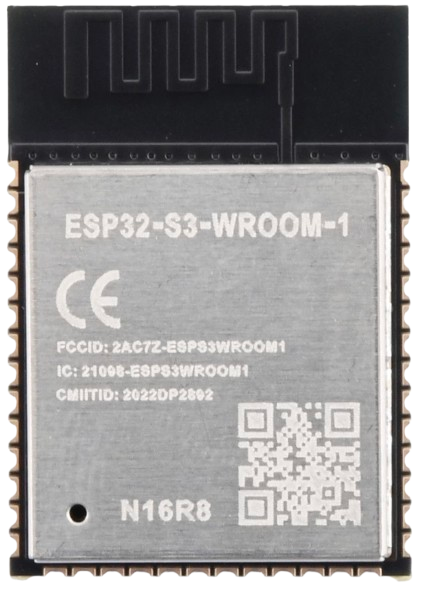
 Design with ESP32-S3-WROOM-1 FRONT in Cirkit Designer
Design with ESP32-S3-WROOM-1 FRONT in Cirkit DesignerIntroduction
The ESP32-S3-WROOM-1 FRONT is a powerful Wi-Fi and Bluetooth microcontroller module designed for Internet of Things (IoT) applications. It features dual-core processing, integrated peripherals, and support for various connectivity options, making it ideal for a wide range of smart devices and embedded systems. This module is built for high performance, low power consumption, and ease of integration into IoT projects.
Explore Projects Built with ESP32-S3-WROOM-1 FRONT
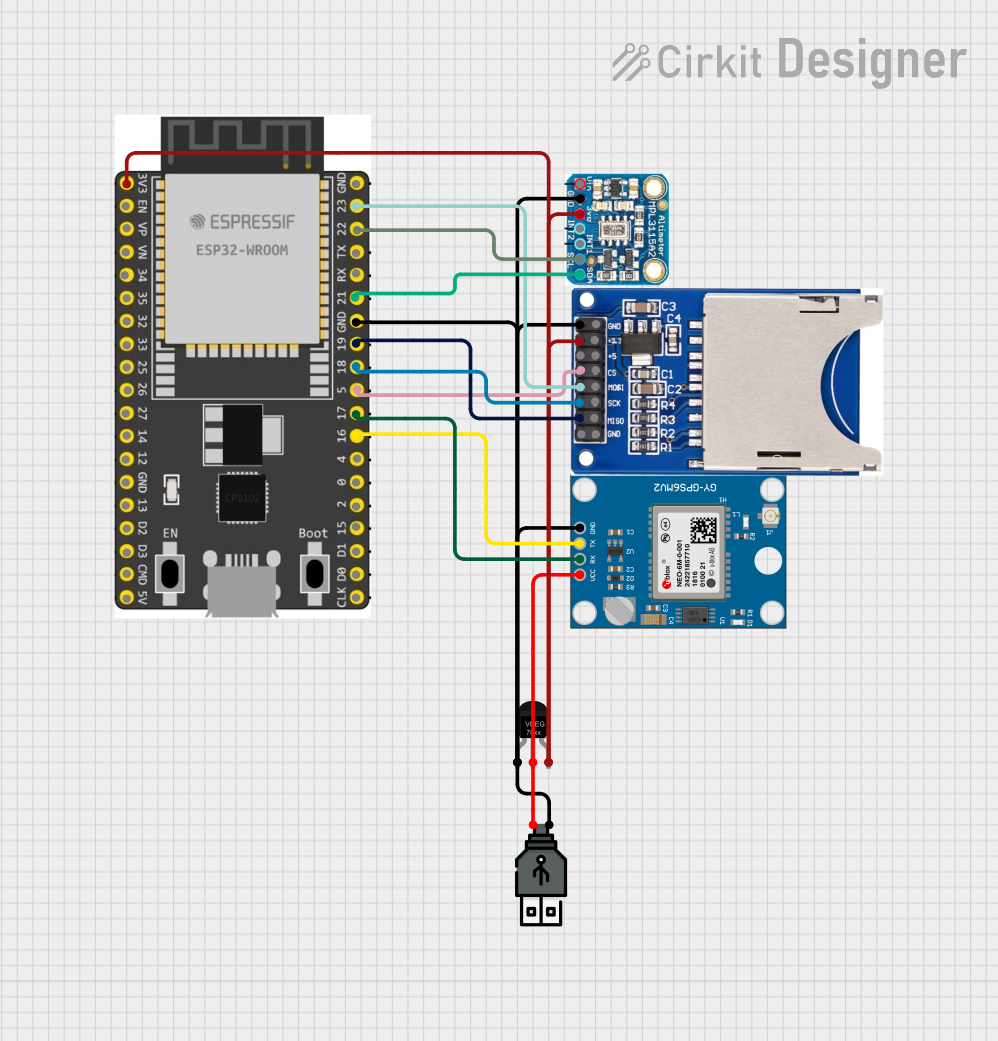
 Open Project in Cirkit Designer
Open Project in Cirkit Designer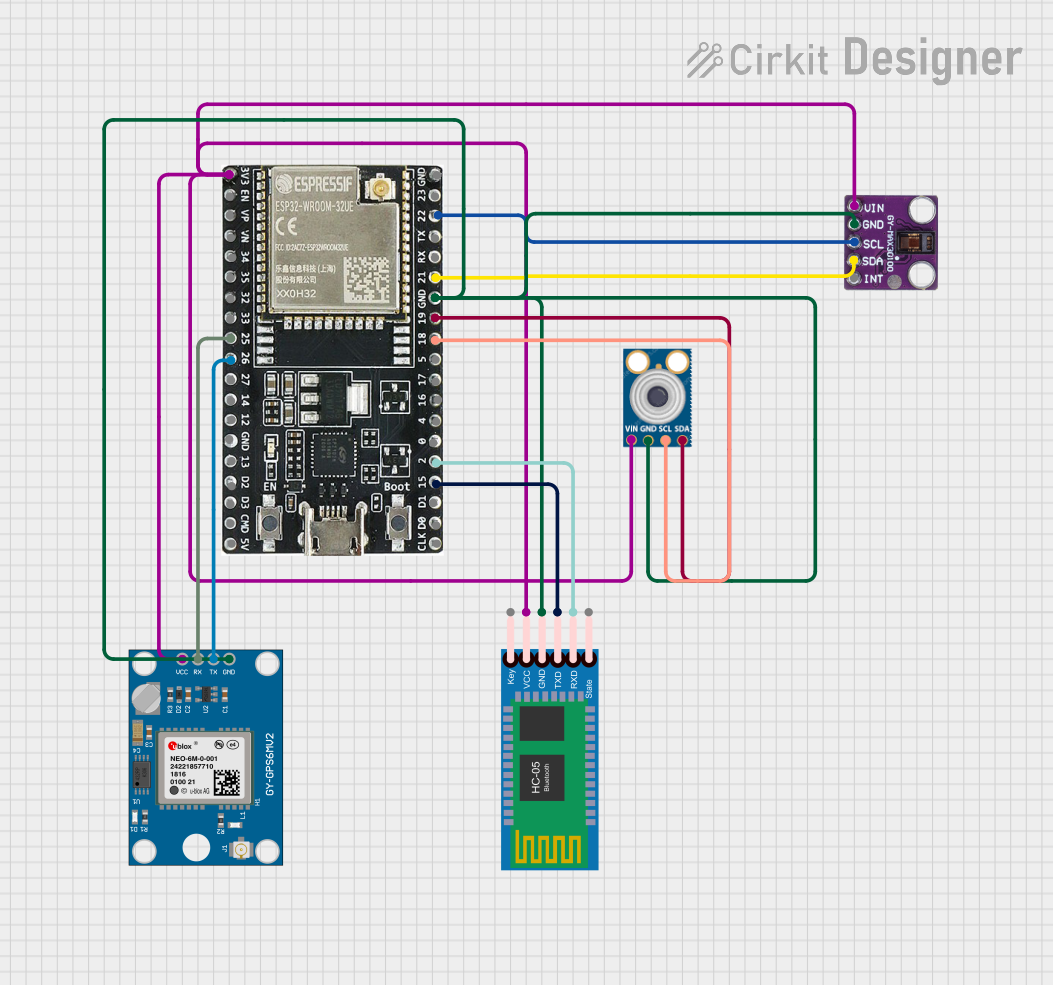
 Open Project in Cirkit Designer
Open Project in Cirkit Designer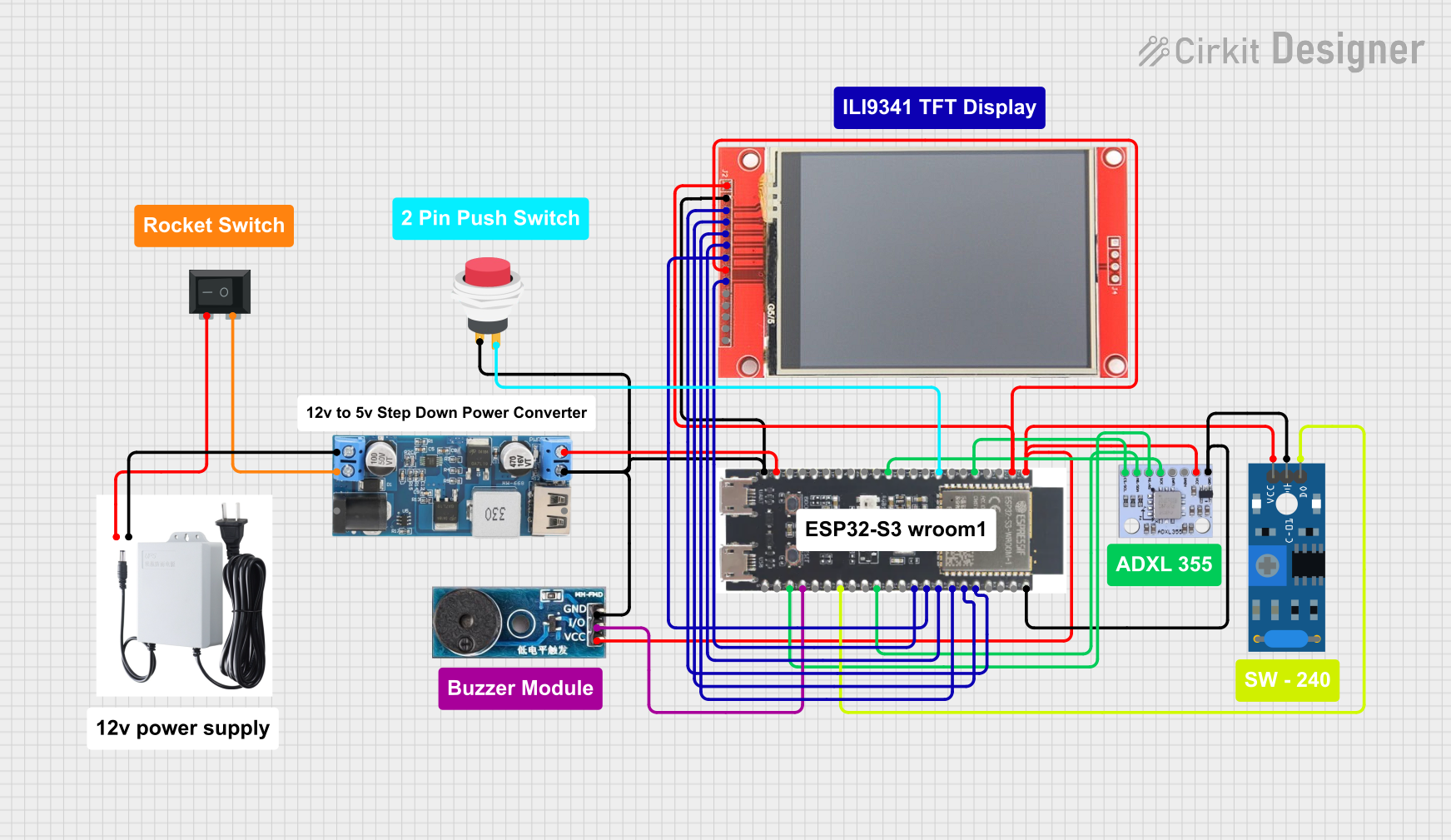
 Open Project in Cirkit Designer
Open Project in Cirkit Designer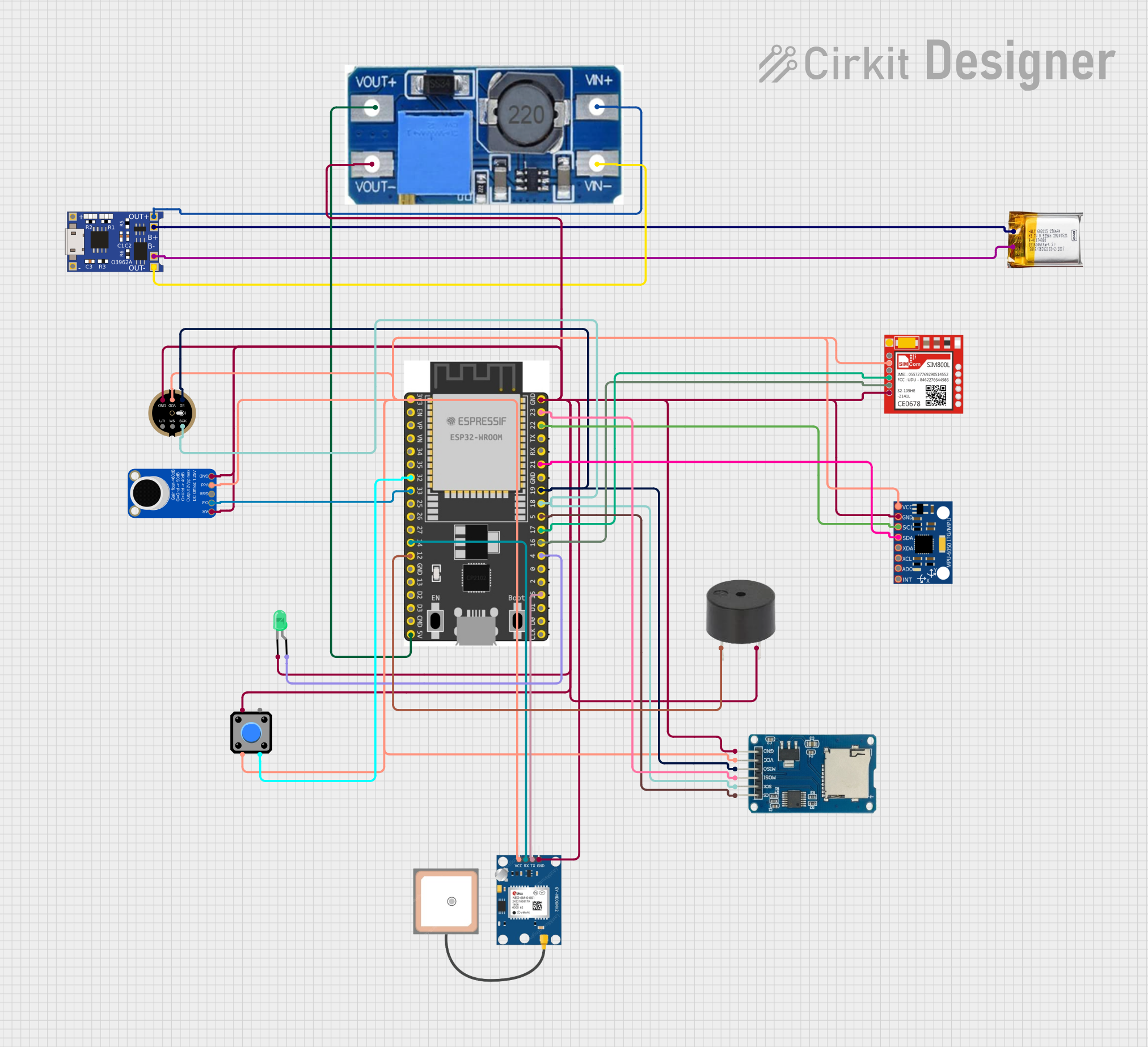
 Open Project in Cirkit Designer
Open Project in Cirkit DesignerExplore Projects Built with ESP32-S3-WROOM-1 FRONT

 Open Project in Cirkit Designer
Open Project in Cirkit Designer
 Open Project in Cirkit Designer
Open Project in Cirkit Designer
 Open Project in Cirkit Designer
Open Project in Cirkit Designer
 Open Project in Cirkit Designer
Open Project in Cirkit DesignerCommon Applications and Use Cases
- Smart home devices (e.g., smart lights, thermostats, and security systems)
- Wearable technology
- Industrial IoT (IIoT) applications
- Wireless sensor networks
- Robotics and automation
- Edge computing and AI/ML applications
Technical Specifications
Key Technical Details
| Parameter | Specification |
|---|---|
| Microcontroller | ESP32-S3 (Xtensa® 32-bit LX7 dual-core processor) |
| Clock Speed | Up to 240 MHz |
| Wireless Connectivity | Wi-Fi 802.11 b/g/n (2.4 GHz), Bluetooth 5.0 |
| Flash Memory | 4 MB (default) |
| SRAM | 512 KB |
| GPIO Pins | Up to 45 (multiplexed with other functions) |
| Operating Voltage | 3.0V to 3.6V |
| Power Consumption | Ultra-low power in deep sleep mode (~10 µA) |
| Interfaces | SPI, I2C, I2S, UART, ADC, DAC, PWM, USB-OTG |
| Dimensions | 18 mm x 19.2 mm |
| Operating Temperature Range | -40°C to +85°C |
Pin Configuration and Descriptions
The ESP32-S3-WROOM-1 FRONT module has multiple pins with versatile functionality. Below is a table of the most commonly used pins:
| Pin Number | Pin Name | Functionality |
|---|---|---|
| 1 | GND | Ground pin |
| 2 | 3V3 | Power supply (3.3V) |
| 3 | EN | Enable pin (active high, resets the module) |
| 4 | GPIO0 | General-purpose I/O, boot mode selection |
| 5 | GPIO1 | General-purpose I/O, UART TX |
| 6 | GPIO2 | General-purpose I/O, UART RX |
| 7 | GPIO12 | General-purpose I/O, ADC2 channel |
| 8 | GPIO13 | General-purpose I/O, PWM output |
| 9 | GPIO14 | General-purpose I/O, SPI CLK |
| 10 | GPIO15 | General-purpose I/O, SPI MOSI |
Note: Many GPIO pins are multiplexed with other functions. Refer to the ESP32-S3 datasheet for a complete pinout and alternate functions.
Usage Instructions
How to Use the ESP32-S3-WROOM-1 FRONT in a Circuit
- Power Supply: Connect the
3V3pin to a stable 3.3V power source and theGNDpin to ground. - Boot Mode: To enter bootloader mode for programming, connect
GPIO0to ground during reset. - Programming: Use a USB-to-UART converter to connect the module to your computer. Connect
TXandRXpins to the converter, and use tools like the ESP-IDF or Arduino IDE for programming. - Peripherals: Connect sensors, actuators, or other peripherals to the GPIO pins. Ensure the voltage levels are compatible with the module.
Important Considerations and Best Practices
- Power Supply: Use a low-noise, stable 3.3V power source to avoid performance issues.
- GPIO Voltage Levels: All GPIO pins are 3.3V logic. Avoid applying 5V directly to any pin.
- Antenna Placement: Ensure the onboard antenna has sufficient clearance from metal objects to avoid interference.
- Deep Sleep Mode: Use deep sleep mode to minimize power consumption in battery-powered applications.
- Firmware Updates: Regularly update the firmware to benefit from the latest features and security patches.
Example: Connecting to an Arduino UNO
The ESP32-S3-WROOM-1 FRONT can be programmed using the Arduino IDE. Below is an example code snippet to connect the module to a Wi-Fi network:
#include <WiFi.h> // Include the Wi-Fi library for ESP32
// Replace with your network credentials
const char* ssid = "Your_SSID";
const char* password = "Your_PASSWORD";
void setup() {
Serial.begin(115200); // Initialize serial communication at 115200 baud
delay(1000); // Wait for a second to stabilize
Serial.println("Connecting to Wi-Fi...");
WiFi.begin(ssid, password); // Start Wi-Fi connection
while (WiFi.status() != WL_CONNECTED) {
delay(500); // Wait for connection
Serial.print(".");
}
Serial.println("\nWi-Fi connected!");
Serial.print("IP Address: ");
Serial.println(WiFi.localIP()); // Print the assigned IP address
}
void loop() {
// Add your main code here
}
Note: Ensure the ESP32-S3-WROOM-1 FRONT is in programming mode when uploading the code.
Troubleshooting and FAQs
Common Issues and Solutions
Module Not Responding
- Cause: Incorrect power supply or wiring.
- Solution: Verify the power supply voltage (3.3V) and check all connections.
Wi-Fi Connection Fails
- Cause: Incorrect SSID or password.
- Solution: Double-check the credentials in your code. Ensure the Wi-Fi network is operational.
GPIO Pin Not Working
- Cause: Pin conflict or incorrect configuration.
- Solution: Check if the pin is multiplexed with another function. Configure it properly in your code.
Programming Fails
- Cause: Incorrect boot mode or driver issues.
- Solution: Ensure
GPIO0is grounded during reset. Install the correct USB-to-UART drivers.
FAQs
Q: Can I use 5V peripherals with the ESP32-S3-WROOM-1 FRONT?
A: No, the module operates at 3.3V logic. Use level shifters for 5V peripherals.Q: How do I update the firmware?
A: Use the ESP-IDF or Arduino IDE to flash the latest firmware via the USB-to-UART interface.Q: What is the maximum Wi-Fi range?
A: The range depends on the environment but typically extends up to 100 meters in open space.Q: Can I use the module for Bluetooth audio streaming?
A: Yes, the ESP32-S3 supports Bluetooth 5.0, which includes audio streaming capabilities.
By following this documentation, you can effectively integrate the ESP32-S3-WROOM-1 FRONT into your IoT projects.